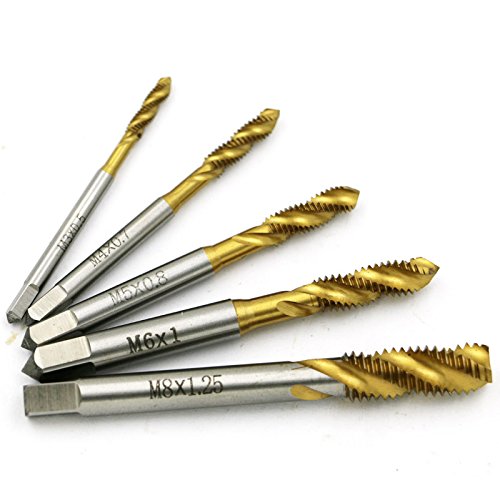1. The hole diameter of the bottom hole is too small
For example, when processing M5×0.5 threads of ferrous metal materials, a 4.5mm diameter drill bit should be used to make a bottom hole with a cutting tap. If a 4.2mm drill bit is misused to make a bottom hole, the part that needs to be cut by the tap will inevitably increase during tapping. , which in turn breaks the tap. It is recommended to choose the correct bottom hole diameter according to the type of tap and the material of the tapping piece. If there is no fully qualified drill bit, you can choose a larger one.
2. Tackling material problem
The material of the tapping piece is not pure, and there are hard spots or pores in some parts, which will cause the tap to lose its balance and break instantly.
3. The machine tool does not meet the accuracy requirements of the tap
The machine tool and clamping body are also very important, especially for high-quality taps, only a certain precision machine tool and clamping body can exert the performance of the tap. It is common that the concentricity is not enough. At the beginning of tapping, the starting position of the tap is incorrect, that is, the axis of the spindle is not concentric with the centerline of the bottom hole, and the torque is too large during the tapping process, which is the main reason for the breakage of the tap.

4. The quality of cutting fluid and lubricating oil is not good
There are problems with the quality of cutting fluid and lubricating oil, and the quality of the processed products is prone to burrs and other adverse conditions, and the service life will also be greatly reduced.
5. Unreasonable cutting speed and feed
When there is a problem in processing, most users take measures to reduce the cutting speed and the feed rate, so that the propulsion force of the tap is reduced, and the thread precision produced by it is greatly reduced, which increases the roughness of the thread surface. , the thread diameter and thread accuracy cannot be controlled, and burrs and other problems are of course more unavoidable. However, if the feed speed is too fast, the resulting torque is too large and the tap is easily broken. The cutting speed during machine attack is generally 6-15m/min for steel; 5-10m/min for quenched and tempered steel or harder steel; 2-7m/min for stainless steel; 8-10m/min for cast iron. For the same material, the smaller the tap diameter takes the higher value, and the larger the tap diameter takes the lower value.
Post time: Jul-15-2022


